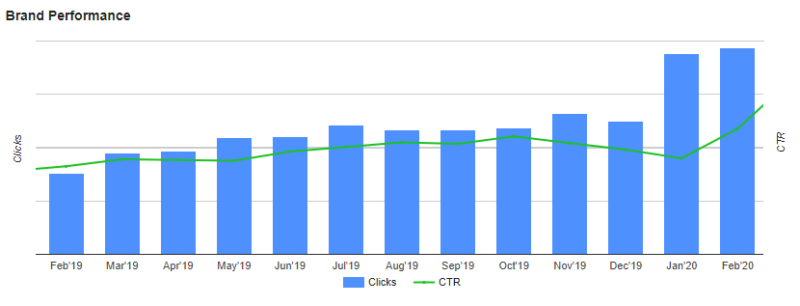Throw away those 2020 forecasts and best practices; the COVID-19 outbreak has changed the game. As marketers, we’re used to being flexible and moving quickly. Now, more than ever, we’ll need to be ready to shift strategies.
B2B businesses have some unique challenges in dealing with the effects of COVID-19. Here are tips on how to navigate this changing landscape to make sure that your brand continues to deliver value to your customers while building a pipeline for the future.
Set up dashboards
What’s the best way to tell if performance is dipping? After all, not all verticals are being impacted the same, and even within verticals, the trends can vary dramatically by company. There are a few ways to look at this: brand search volume reflecting demand changes (if typically steady), conversion rate changes, year-over-year trends. You can set up dashboards in Search Ads 360 and Google Data Studio to monitor performance.

For global brands, examine trends at a country level. Some B2B brands we work with in APAC did not see performance declines through February, in part because of high spend in countries like Australia and India, where COVID-19 cases remained low to that point. For B2B, you should especially look for changes in front-end performance, as conversion latency may cause a delay in an impact on back-end results.
Also look out for changes in media consumption. Mobile traffic will likely increase. Is your site optimized for mobile conversions, or should you incorporate mobile bid modifiers? YouTube viewership for certain content is on the rise, potentially resulting in lower CPV. Now might be a good time to explore new digital channels.
Consider context
Review your existing marketing plan and ask yourself, are my campaigns still right given the current context and target market? Are we using the appropriate tone in our copy?
What once seemed harmless may now be upsetting. Review all creative for instances of handshakes, high fives, hands touching faces, crowds, etc. These images can be triggering now so it’s best to pause before any negative comments roll in.
Play it safe
For B2B brands that want to avoid showing next to COVID-19 content can exclude broader topics in Google like Health or News or go more granular with Infectious Diseases topic exclusions. Set YouTube inventory to “Limited” to err on the conservative side. Exclude COVID-19-related keywords, e.g. covid, ncov, coronavirus, corona, sars, wuhan, virus, pandemic, epidemic.
Also, be careful about which tests you choose to run while auctions and markets remain turbulent from COVID-19. Tests that are meant to inform strategic decisions for the long-term (greater than 3 months) are irrelevant in a highly dynamic time, as are matched market tests in which you compare different geos. After all, it’s not business as usual for anyone right now.
Test new audiences
Think about alternate uses for your service/product that might be especially relevant right now. For example, sales teams for a CRM software can try targeting industries like pharma/biotech that traditionally rely on field sales but are now remote.
On Facebook, you can test turning on “detailed targeting expansion” for interest audiences. This will expand reach to a broader set of people than defined in your targeting at a time when many users are now engaging with content that they do not usually consume. Or you can test opening up targeting with broad audiences and let the algorithm look for new users who are likely to convert.

Build awareness through demand generation
B2B sales cycles tend to be longer, so making drastic changes to your paid media strategy could have lasting effects. While you may be reducing budgets overall, it’s important to keep feeding the upper funnel so that your brand remains top of mind when demand bounces back. Think about ways that you can repurpose existing content to fit the times, e.g. promoting a whitepaper with a lead gen form or turning a summit into a virtual event. Consider using sponsorship dollars that you recoup from canceled in-person events to produce a video content series, upgrade your webinar content, and more to connect with people remotely.
Above all, maintain empathy for your users and their changing needs and challenges, and focus on the data, not fear or anxiety, to make the right decisions for your business. Staying strategic in this time means making quick adjustments as news cycles and performance reports dictate, so make sure you’re monitoring the macro landscape and your company’s internal and competitive reports aggressively to set your course with confidence.
The post How B2B companies can be proactive about managing paid media during COVID-19 appeared first on Search Engine Land.
source https://searchengineland.com/how-b2b-companies-can-be-proactive-about-managing-paid-media-during-covid-19-331418


0 Comments